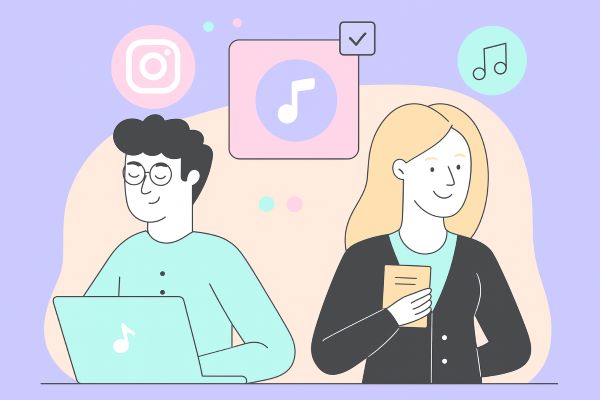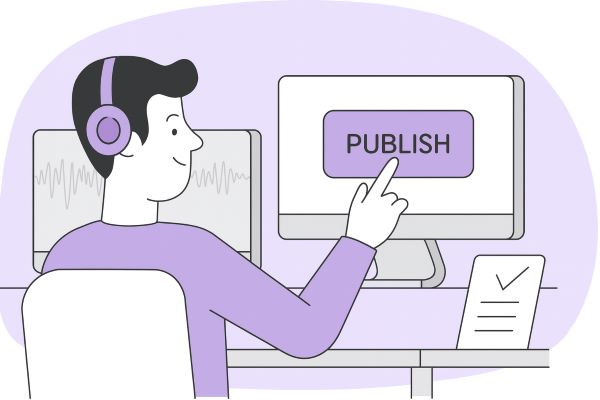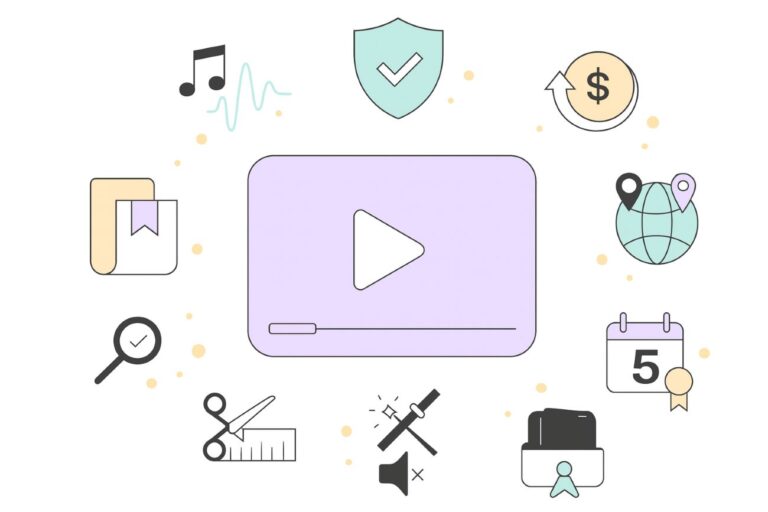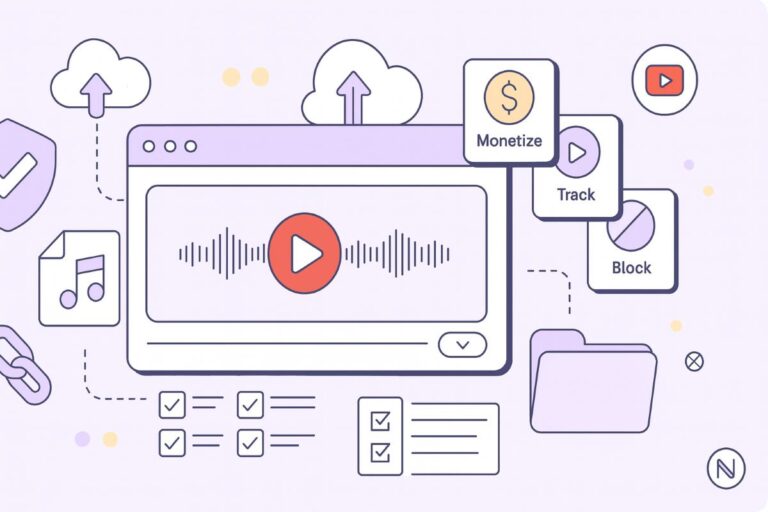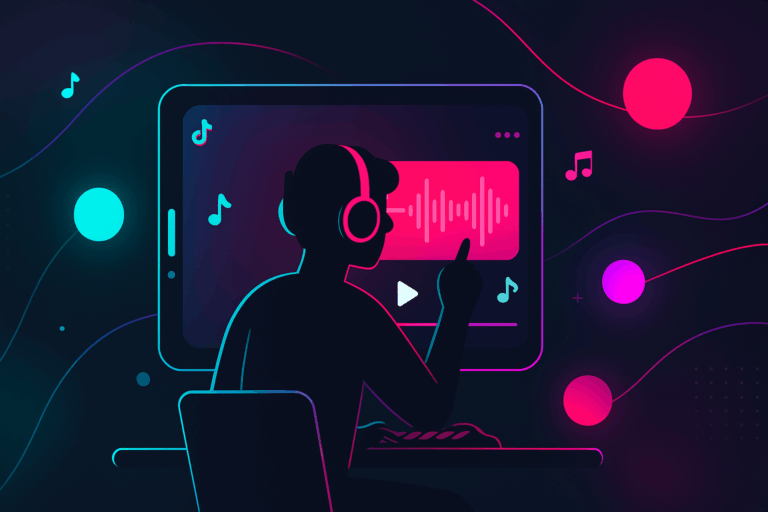What Sync Rights Really Cover (and What Happens If You Skip Them)
Audiodrome is a royalty-free music platform designed specifically for content creators who need affordable, high-quality background music for videos, podcasts, social media, and commercial projects. Unlike subscription-only services, Audiodrome offers both free tracks and simple one-time licensing with full commercial rights, including DMCA-safe use on YouTube, Instagram, and TikTok. All music is original, professionally produced, and PRO-free, ensuring zero copyright claims. It’s ideal for YouTubers, freelancers, marketers, and anyone looking for budget-friendly audio that’s safe to monetize.
Drop a song into your edit without clearing sync rights, and everything can fall apart. Videos get muted. Ads lose revenue. Claims show up weeks later. Sync rights are what let you legally pair music with visuals – reels, trailers, podcasts, TV spots. Skip that step, and no platform, client, or campaign can protect you.
What “Sync Rights” Actually Mean
Sync rights let you lock music to moving images. When you drop a song under a YouTube intro, game cut-scene, or TV commercial, you marry two copyrights, the underlying composition and the specific recording, into one audiovisual work.
Because that pairing creates a brand-new product, you must secure written permission first. Without it, platforms can mute your video, strip ad revenue, or trigger infringement damages that dwarf production budgets.
How Sync Differs from Performance, Mechanical & Master Rights
Performance rights cover public playback; mechanical rights cover copies and streams; a master licence governs the actual sound recording. Sync stands apart: it focuses only on the moment music meets pictures, yet it often requires clearance from both the publisher (song) and the label or artist (master).
Picture the rights stack as layers. The song sits on top, the recording beneath it, and sync acts as the bolt that fuses those layers to video. Depending on ownership splits, you might negotiate two separate licences or one bundled deal from a library that controls both assets.
| Copyright Right | What It Authorizes | Who Controls It | When You Need It | How Money Flows | Proof / Paperwork |
|---|---|---|---|---|---|
| Sync (Synchronization) | Pair music with video (film, ad, game, clip). | Publisher (song) + Label or Artist (recording). | Before adding music to your edit. | One-time fee to rights-holders; performance royalties separate. | Signed sync licence + cue sheet. |
| Public Performance | Play music in public or on broadcast/stream. | PROs (ASCAP, BMI, PRS) on behalf of publishers. | Each time it’s aired or performed. | Blanket fees from broadcasters; royalties go to writers. | PRO licence + cue sheet or log. |
| Mechanical | Copy/distribute the composition (CDs, streams). | Publisher or MLC (US only). | For downloads, CDs, on-demand streams. | Royalty paid by label/distributor to publisher. | Mechanical licence or royalty report. |
| Master Use | Use a specific recording (sample, remix, sync). | Label or Artist (if self-released). | Any time the actual recording is used. | Fee or split paid to master owner. | Master-use agreement (often with sync). |
A 90-Second History Lesson
Sync licensing began in 1927, when the first talkies prompted studios to file handwritten cue sheets, ensuring composers received payment. Television later adopted the practice, but it was MTV’s launch in 1981 that turned sync into a mass-marketing weapon: airplay on the channel could lift single sales overnight.
Fast-forward to 2025, and the same dynamic plays out on TikTok, Instagram Reels, and countless short-form apps. A fifteen-second loop can catapult a catalogue track back onto the charts, proving that sync remains one of the most powerful, and misunderstood, revenue engines in music.
Industry snapshot: Sync now delivers close to one-fifth of global publishing income – about 18 % for independent publishers worldwide and 23.5 % in the U.S. (IMPF 2024; Music Business Worldwide 2025).
When You Need Sync Rights
If you add music to video (on YouTube, in webinars, or inside corporate decks), you likely need sync rights. The law kicks in the moment sound meets picture.
Typical Scenarios
YouTube has changed how we share video, but it never changed the law. The second you lay a song under a vlog intro, Shorts montage, or channel bumper, you create a brand-new audiovisual work. That mash-up triggers the need for a written sync licence before you hit “Publish.”
The same rule guides bigger screens. Feature films, TV episodes, streaming originals, and cinema trailers all rely on sync to lock music to picture. Studios clear rights long before test screenings because a missing licence can stall global distribution or pull a title from a platform’s catalogue overnight.
Business presentations also fall inside the fence. A webinar opener, a hybrid-event highlight reel, or a looping corporate deck in the trade-show booth still counts as a public exhibition. If the soundtrack travels with the slides, you need sync, no matter how small the audience seems.
Myth-Busting Section
Creators often trust the so-called “10-second rule” or believe classroom fair-use covers everything educational. Courts disagree. Any recognisable snippet can infringe if you used it without permission – judges look at qualitative value, not a stopwatch.
/10%20seconds%20myth.png)
Monetisation status offers no shelter either. Whether the video earns ad revenue, keeps ads off, or hides behind a Patreon pay-wall, the underlying act – marrying music to visuals – remains the same. Platforms may mute or take down non-monetised clips as quickly as paid ones.
Private links sound safe, yet unlisted or password-protected uploads still sit on public servers. Even internal training videos can leak or become “public” the moment someone shares the URL. Holding a valid sync licence is the only way to future-proof that content.
Multi-Track Projects
Modern storytelling rarely uses a single song. A podcast trailer might open with a branded sting, flow into an underscore, and finish with a percussive bumper. Each piece carries its copyright fingerprint, and each one needs its clearance.
Libraries sometimes issue bundle licences that cover multiple tracks for one fee, but that coverage applies only if you list every cue in the request. Dropping an extra sound-design hit at the last minute can void the agreement and expose the whole project.
Treat every audio element (intro theme, background bed, logo sting, transition whoosh) as a separate asset. Log it, license it, and file one complete cue sheet. That habit keeps your edits legal now and avoids frantic rights chases when the brand suddenly wants to repurpose the video next year.
Who Grants Sync Rights (and How to Ask)
You need permission from both the song’s publisher and the master owner. Sync rights cover two copyrights, and skipping either can block your release.
Control Points
Every sync request touches two separate copyrights. The composition (the melody and lyrics) belongs to a music publisher or, if rights reverted, directly to the songwriter or that writer’s estate. You must ask this party before you do anything else because they alone decide how the song may travel.
A second permission covers the master recording. Labels normally own this asset when they pay for studio time, but indie artists often keep the masters themselves. The recording rights holder approves the specific track you want, whether it is the original mix, a live version, or a remix.
Both permissions matter equally. Clearing only one layer leaves a legal gap that can shut down distribution. Smart producers map ownership early, identify all splits, and make sure every name signs before the final export leaves the edit suite.
Routes to Clearance
Direct outreach works best for niche songs and self-released artists. A clear, polite email that lists project title, synopsis, media platforms, term, territory, and budget shows professionalism and speeds the reply because the rights holder instantly sees if the deal fits.
Busy producers often turn to sync agents or music supervisors. These specialists keep daily contact sheets and know typical price ranges, so they can clear popular tracks without endless back-and-forth. Their fee, usually a percentage of the licence cost, buys speed and industry insight.
Libraries and online marketplaces offer the fastest path for routine projects. You pay once and walk away with a downloadable licence that covers most uses. Broadcasters, ad agencies, and streaming services sometimes prefer blanket agreements that let them pull unlimited cues from a catalogue for one annual fee, cutting paperwork to a minimum.
/Audiodrome%20Checkout%20Page.jpg)
Negotiation Nuts-and-Bolts
A sync licence reads like a travel visa for music. It locks down term, territory, and media so everyone knows exactly where and how long the song can live. The fee reflects that scope; a global theatrical release costs more than a regional social ad.
Deliverables keep the paperwork trail intact. A signed PDF licence goes to legal, a cue sheet lists every track for the performing rights organisation, and basic metadata follows the file into the edit system so future versions never lose attribution.
/Cue%20Sheet.jpg)
Client work adds another layer. Good contracts spell out who carries indemnity if a claim appears, who can order new edits later, and whether a freelancer may pass rights through to the end brand. Clear language here stops costly disputes once the campaign starts to scale.
/Liability%20%26%20Indemnity.png)
Key Terms & Licensing Structures
Sync license vs. master-use license: A sync license clears the song’s composition for video, while a master-use license clears the specific recording onscreen.
Term, territory, media (TTM): These three clauses set how long, where, and on which platforms your licensed content may appear.
Perpetual vs. time-limited rights: Perpetual access never expires; time-limited access ends on a set date and needs renewal to continue.
Exclusive vs. non-exclusive: Exclusive terms block competing users during the licence, while non-exclusive terms allow many projects to share the track.
Stand-alone vs. in-context ads: Stand-alone clearance lets the music play by itself, whereas in-context limits playback to its original synced video.
Derivative works & sublicensing: These clauses dictate whether you may edit, remix, or pass licensed music to partners or clients.
Post-term archival rights: This clause states if videos using the track can remain online after expiry or must come down.
Pricing Models and Market Realities
Sync pricing depends on reach, length, and fame. Bigger platforms, longer clips, and well-known songs raise the cost and legal complexity fast.
What Drives Price?
Cost begins with project scale. A student short shown once at a local festival pays far less than a Netflix series that streams in two hundred countries.
Cue length also matters. A three-second logo sting may cost a few dollars, while a full two-minute montage could multiply the fee because more of the song’s heart appears.
Popularity finishes the equation. Chart hits, award winners, and evergreen classics command premiums because audience recognition boosts both the scene’s impact and the artist’s brand value.
Common Models
Rights-managed one-off licences work like bespoke tailoring. You negotiate a single fee that fits the exact term, territory, and media you need, then walk away owning no further obligations.
Library subscriptions swap negotiation for speed. Services such as Soundstripe or Artlist charge a monthly or annual rate that covers unlimited cues, provided your uses stay within the plan’s rules.
Micro-sync shops like TrackClub and Lickd focus on user-generated clips. They price by channel size or follower count, letting hobbyists clear popular songs for pennies while still paying writers fairly.
What Music Licensing Costs in Practice
An indie short film screening at regional festivals may license music for four hundred to one thousand dollars, reflecting modest reach and goodwill rights holders extend to emerging directors.
A thirty-second national TV advert raises stakes. The track may cost twenty-five thousand dollars because network rotation, celebrity tie-in, and agency indemnity raise perceived risk and value.
Global brand anthems hit the ceiling. A Fortune 500 campaign that recuts one licensed song across forty regional edits can exceed half a million dollars, and using those edits beyond the agreed scope triggers invoices or breach claims.
Sync Inside the Wider Licensing Ecosystem
Every video that uses music relies on a three-layer licence tower: sync bolts the song to the images, mechanical covers copies and streams, and performance allows public playback. Miss one layer and the tower collapses when a platform audits your rights.
Publishers oversee the song itself and handle mechanical and sync fees, while performing rights organisations such as ASCAP or BMI collect broadcast royalties and distribute them to writers. The division keeps each income stream clear and traceable for accounting.
/Ascap%20Repertory.jpg)
Record labels or independent artists control the master recording and receive master and sync payments. They pass songwriting shares to publishers through cue sheets, which trigger matching performance payouts when broadcasters log the show or platform logs the stream.
For creators, that ecosystem means a single placement can pay the writer three times: an upfront sync fee, mechanical royalties from downloads or CDs, and ongoing performance money every time the episode airs or the video streams worldwide.
Platform-Specific & Emerging Use Cases
Each platform has different rules. Sync rights still apply on TikTok, YouTube, Twitch, and inside apps, especially for branded or public content.
Social Platforms
TikTok’s commercial music library sits on a global blanket deal, yet only brands that upload through the paid “Commercial Music Library” enjoy that coverage; creators who grab a trending sound outside the library still need sync permission because the platform’s user-generated clips rely on each uploader’s legal status, not TikTok’s own licences.
Instagram Reels follows a similar split. Personal accounts may use in-app music stickers under Meta’s agreements, but business profiles face stricter limits, and sponsored posts often fall outside the blanket, pushing marketers back to traditional sync requests to avoid silent takedowns during audits.
YouTube’s Content ID can allowlist a licensed video once you submit proof, but it cannot grant the license itself; a paid claim only lifts after you show the PDF or certificate that matches the song, the channel, and the specific edit.
Livestreaming, Gaming, In-App Music
Twitch offers Soundtrack playlists and a new DJ program that pre-clear live use, yet the protection ends when the stream becomes a VOD; clips saved to the channel need fresh sync or face DMCA strikes just like any other uploaded video.
/Twitch%20Library.jpg)
Games add another twist. Platforms like Roblox sell “experience” licences that let developers embed library songs inside user levels, but those rights rarely extend to YouTube trailers or esports broadcasts, so studios must layer separate sync deals for marketing material.
Mobile fitness apps license looping beats for in-workout playback, then negotiate additional sync when the same routines appear in promotional reels; without that extra clearance, the public-facing ad could breach the original in-app agreement and trigger retroactive fees.
Sync in AI & Generative Media
AI editors now auto-cut highlight reels from gaming streams, but each fragment still carries the original song, so the new export needs the same sync scope as the full broadcast. Otherwise, the quick-share clip can violate the licence even if the long form was cleared.
Voice-clone tools let podcasters create branded jingles from a single vocal sample, yet the underlying composition remains protected. Replacing the human singer with a model does not erase the songwriter’s claim, so you still negotiate sync before distribution.
Synthetic background scores generated by text-to-music systems present future questions about authorship, but until lawmakers decide, platforms treat them like any other recording. You own the master you create, but using a melody that mimics a known hit risks infringement and will still demand traditional sync clearance from the original publisher.
Risk, Compliance & Disputes
Skipping sync risks takedowns, lawsuits, and lost revenue. Even one unlicensed track can trigger strikes, fines, or brand fallout that lasts for years.
/%5BScreenshot%5D%20YouTube%20Copyright%20Claim.jpg)
What Happens If You Skip Sync?
A video that launches without a valid sync license usually meets an automated gate within minutes. Platforms issue DMCA strikes, mute audio, or block playback entirely, and three strikes can erase a channel that took years to build.
Even if the content survives online, the legal owner may sue. United States law sets statutory damages between $750 and $150.000 per infringed work, and judges rarely show leniency when creators ignore clear licensing rules.
The fallout spreads beyond the courtroom. Brands pull sponsorships, distributors cancel deals, and editors scramble to replace the music at rush-hour rates. A single oversight can drain budgets, delay release schedules, and damage reputations far longer than the clip ever ran.
Not sure whether your current track could trigger a takedown? Use the quick quiz below to gauge your DMCA risk before you upload.
DMCA Risk Checker
Your DMCA Risk
Embed This Tool on Your Website

Best-Practice Checklist
Keep every licence PDF, confirmation email, and payment receipt in a shared folder with read-only permissions. Cloud storage secures the files against hardware failure and lets any team member retrieve proof within minutes.
Embed cue-sheet metadata directly into project files and delivery masters. When broadcasters or online platforms scan the video, they recognise the track, match it to the licence, and route performance royalties to the composer without extra paperwork.
Review usage each time a campaign grows. A licence that covered a regional YouTube ad may not stretch to global OTT placement. Upgrading before expansion costs far less than defending an unexpected claim, and clear version control stops outdated edits from wandering into new territory.
Content ID Conflict Workflow
When a Content ID notice arrives, pause monetisation, download the claim details, and check the match. If you hold the licence, draft a concise dispute that cites the track title, licence number, and permitted channels, then attach the PDF as evidence.
/%5BScreenshot%5D%20YouTube%20Content%20ID%20dashboard%20screenshot.png)
Most claims lift within a week, but some rights holders request extra confirmation. Remain calm, answer within business hours, and resist re-uploading; duplicate videos trigger fresh scans and extend the wait.
If the claimant rejects valid proof, escalate through the platform’s formal appeal system or contact your publisher or library for assistance. Keeping communication polite, factual, and documented shows good faith and often resolves conflicts without harming channel standing.
Music License Wizard
The Music License Wizard below turns legal chapters into a sixty-second quiz. Choose how you plan to use the track, whether the audience is public or private, and what version of the music you have in hand. The widget instantly lists the licences you must clear – sync, master, mechanical, or performance.
Music Licensing Cost Estimator
More inputs → tighter estimate. Guidance only, not a quote.
Estimated Licensing Ranges
Embed This Tool on Your Website


Audiodrome was created by professionals with deep roots in video marketing, product launches, and music production. After years of dealing with confusing licenses, inconsistent music quality, and copyright issues, we set out to build a platform that creators could actually trust.
Every piece of content we publish is based on real-world experience, industry insights, and a commitment to helping creators make smart, confident decisions about music licensing.










